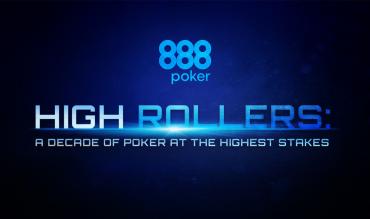Football has the Champions League. American Football has the Superbowl. Basketball has the NBA PlayOffs. Ice Hockey has the Stanley Cup. Athletics has the Olympics.
To compete in these events, you have to have reached the highest echelon of your sport. Only the very best teams and individual athletes in the world get to play in these gladiatorial arenas of athleticism and excellence.
But what about poker?
How does the poker world separate the good from the great?
For many years, when it came to tournament poker, all eyes gazed on the World Series of Poker (WSOP), and the number of bracelets won. But times have changed in recent years. Tournaments starting with a $25k buy-in are increasing in popularity and with it a new hierarchy of stars illuminating poker the likes of which we haven't seen since the heady days of televised high stakes cash games.
Follow along as 888poker goes behind the life of a High Roller and charts the inspirational career of 888poker ambassador, Dominik Nitsche.
Table of Contents
- Enter the Nose Bleed Tournament Buy-Ins
- The Big Game Stats
- What about outside of Las Vegas and Europe?
- Buying and Selling Action in High Stakes Circles
- The High Roller Stars
Enter the Nose Bleed Tournament Buy-Ins
In May 2017, 888Poker sponsored the $300,000 buy-in Super High Roller Bowl (SHRB) at the Aria, Las Vegas. Either side of that enormous buy-in were six Aria High Rollers ranging in buy-in levels from $10,000 to $100,000, and each of them contained the re-entry clause, meaning players could have been $1m+ in the hole if they chose to compete in the full schedule, and bricked every event.
On the other hand, three players earned $1m+ scores in those Aria High Rollers, with two others dragging in $900,000 and $800,000, respectively.
And then you had the thrills and spills of the SHRB itself culminating in Christoph Vogelsang beating Jake Schindler in a tumultuous five hours heads-up war to take the $6m first prize and title back to Germany for the second successive year.
There is pain.
There is joy.
But, how can this continue?
Will our elite run out of money and what do this new stratum of stars bring to the poker ecology?
I reached out to some of them to gauge opinion and take a trip down memory lane to see who the greatest high rollers have been in the past decade, and to have a punt on what the future might look like?
Enjoy.
The Big Game Stats
The tables you are about to see come from a decade worth of data Jan 07 - Dec 16.
All information came from The Hendon Mob database, and we thank Eric Danis of the Global Poker Index (GPI) for providing the raw data without which this article wouldn't have been possible.
There have been 238 tournaments globally with a buy-in of $25,000 or higher between the data points described, averaging 24 events per year. But the increase in events has risen dramatically in the past two years, with an average of 62 events per year, an 88% increase since Jan 2007.
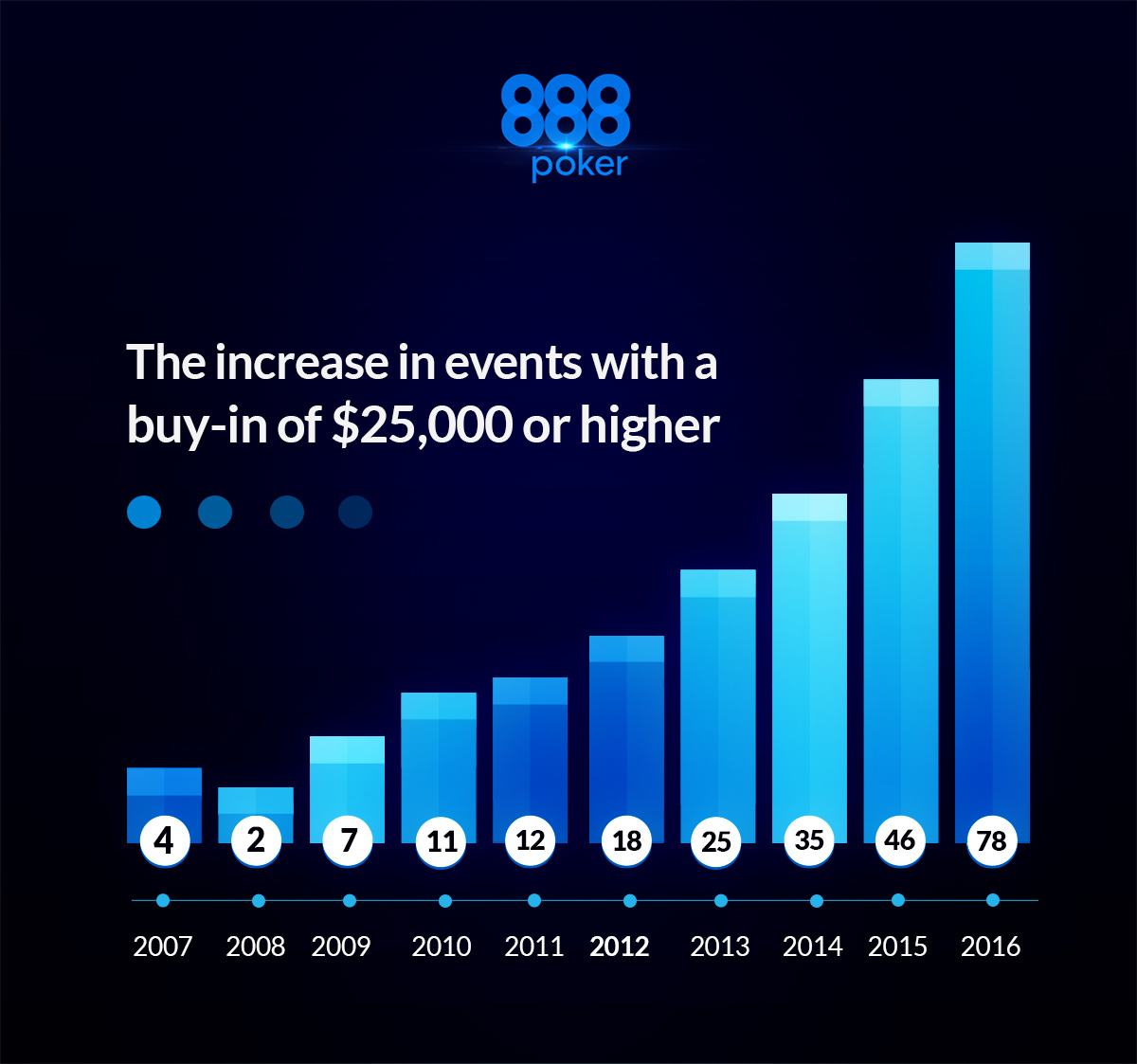
When you look at the scattering of events by each organiser, you can observe the primary reasons for the increase in numbers have been the creation of the Aria High Rollers and the decision by PokerStars to carve out a High Roller niche.
Here are the Top 10 event organisers in the past decade by event number:
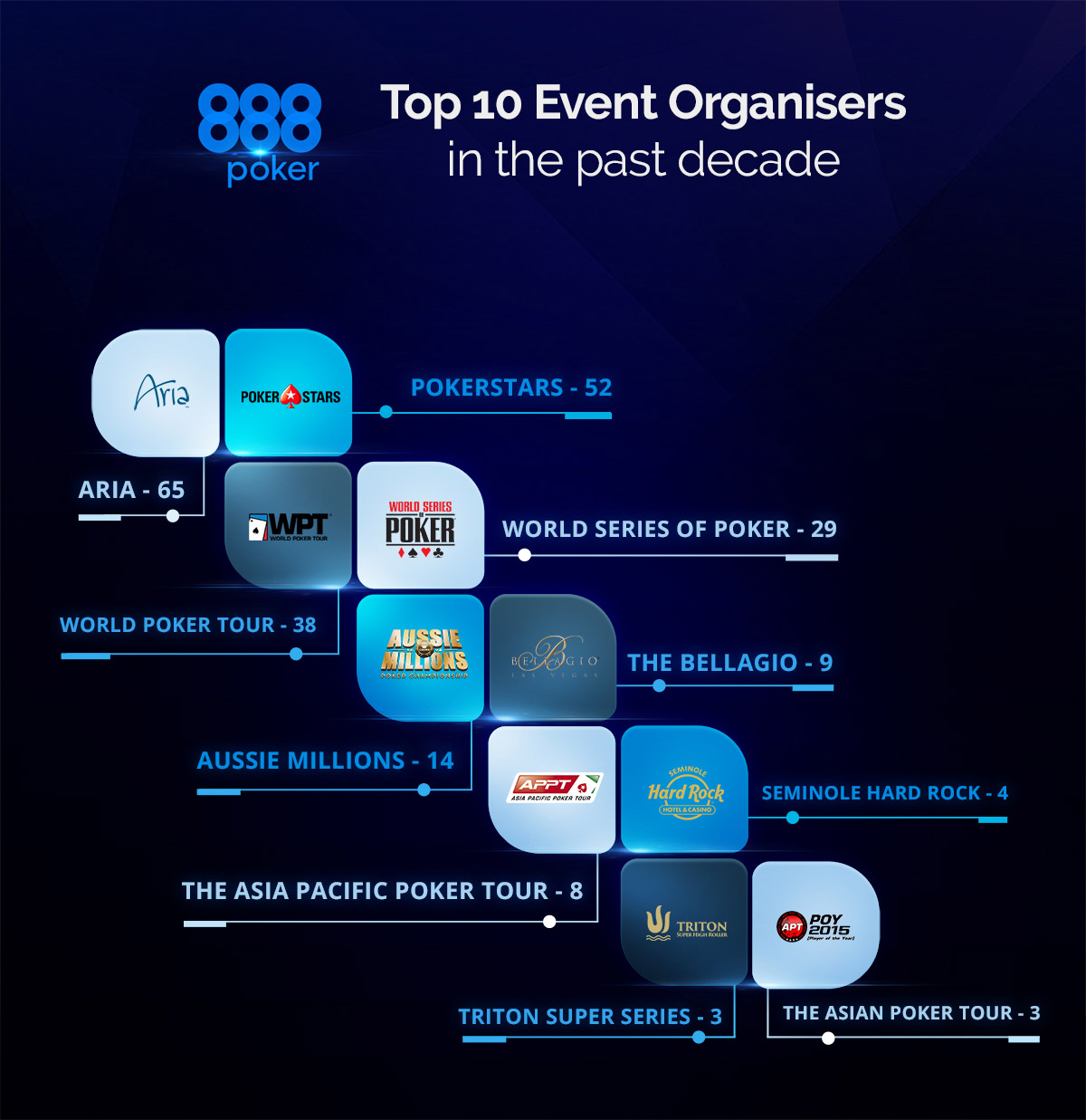
When it comes to the home of High Stakes tournaments ($25k+) is has to be Las Vegas with 118 events held in the past decade, and this is down to the Aria, Bellagio and the presence of the WSOP.
During a recent Poker Central podcast, Isaac Haxton said the novelty of the Aria High Rollers is wearing off, but Daniel Negreanu and Brian Rast's decision to start High Stakes Mixed Game tournaments at The Bellagio could offset this downturn.
As you will see later in the article, the Americans dominate the action, but there is a substantial influx of European players, particularly from Germany.
Are we going to see an Aria type home in Europe, and if so where? The King's Casino in Rozvadov, Czech Republic? Dusk till Dawn (DTD), Nottingham, England? Both venues are distinct possibilities, but these aren't Las Vegas.
I don't think there will be a European hub, but I do think the competition between PokerStars, partypoker, and 888Poker will increase the number of High Stakes events in Europe over the coming years.
Here are the top five global regions for High Stakes games:
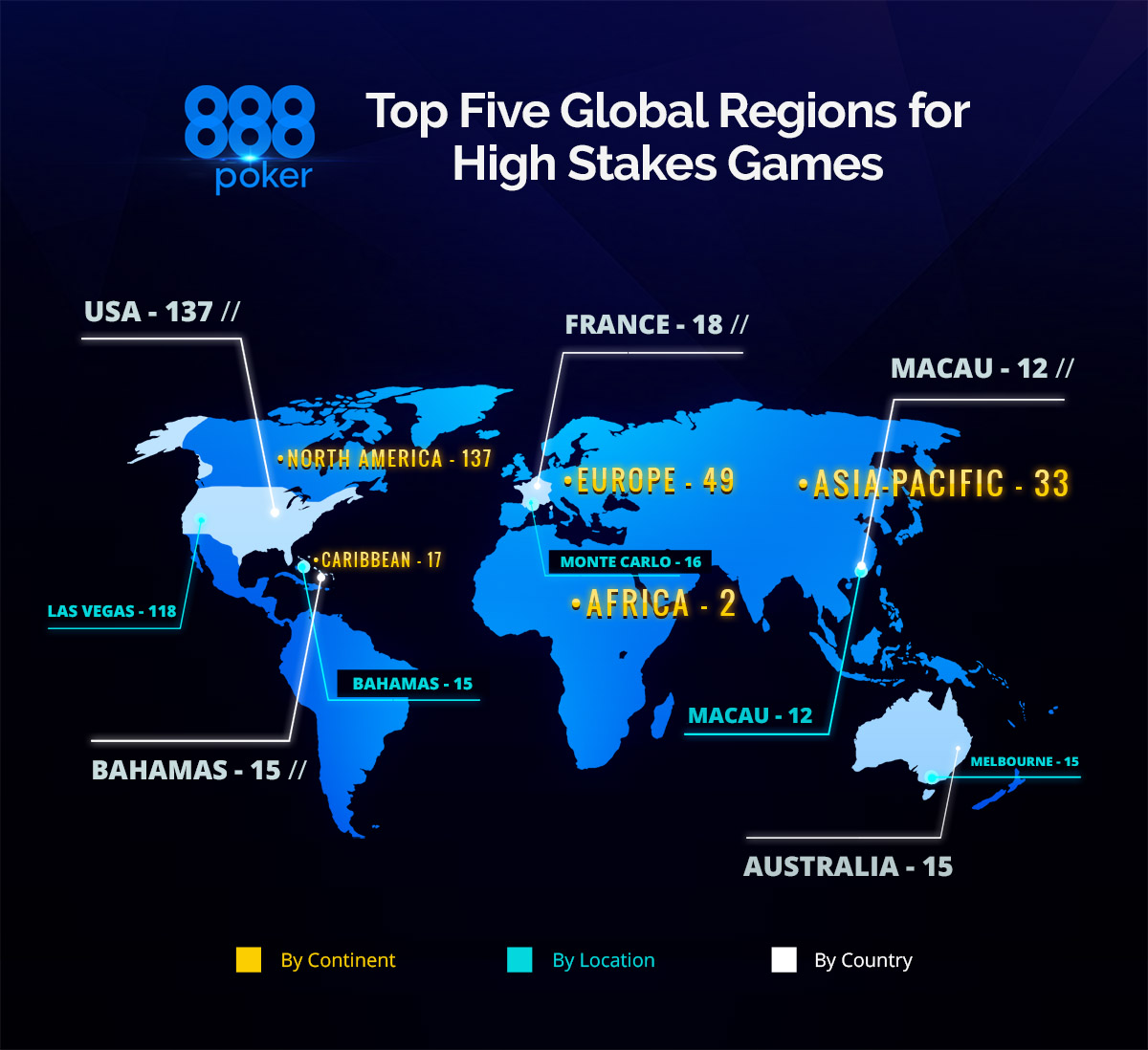
What about outside of Las Vegas and Europe?
The Aussie Millions has been a mainstay of High Stakes action for the past decade. The AUD$100,000 & AUD$250,000 Challenges have remained unchanged for many years, shot clock aside.
The same applies to the Bahamas. The PokerStars Championship Bahamas has replaced the PokerStars Caribbean Adventure (PCA), but this doesn't signify a significant increase in High Roller events at The Atlantis.
This leaves Asia, and specifically, Macau and the Philippines. I get the sense that the team behind the Triton Super Series are just getting started, and with the presence of high stakes cash game action, particularly in Macau, there is room for more high-stakes tournaments in this part of the world, and I expect to see growth in this area.
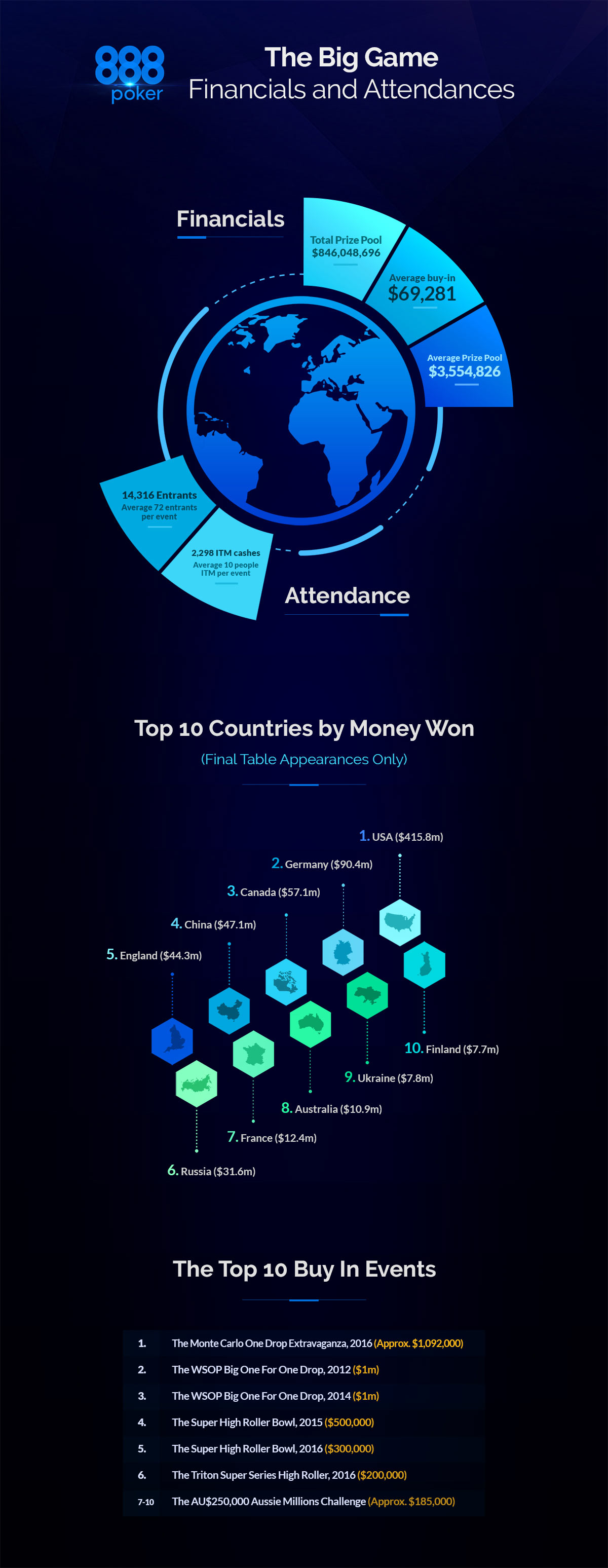
One of the reasons the Las Vegas High Stakes tournament activity has picked up in recent years could be the absence of online High Stakes cash games and tournaments forcing players to go out and play.
Buying and Selling Action in High Stakes Circles
Outside of North America, the High Roller scene is dominated by the Germans. The domination began with the likes of Tobias Reinkemeier, Philipp Gruissem, and Christopher Vogelsang occupying the deep end of events, and in more recent times the likes of Fedor Holz and Rainer Kempe.
These games exist because the players are more likely to invest in each other. Fedor and Co, for example, not only take pieces of each other's action, but they also study together and socialise outside of poker.
These poker groups raise some ethical questions as you could be in a situation where a group of players all have an equal investment in each other playing a lone player who is outside of the group.
Erik Seidel has played in these events from the very outset, and when I asked him about the practice of selling and sharing action, he wasn't concerned about the integrity of the game.
"I have no problem at all with it," said Seidel. "Almost every player in the field is backed and or trading, that's how these things work, and I don't think collusion is a factor at all, not happening."
When it comes to the practice of sharing pieces and how this could manifest itself as the field gets shorter, Kempe feels that transparency is important.
“It can create awkward spots of course, but personally I haven't had bad experiences with it in live poker. And I feel like people are quite transparent when asked about it which is a good sign regarding their agenda.”
Kempe also feels that selling action is a necessity if the pros are to take a seat in the games on a regular basis.
"I don't think the games in Europe neither live nor online give people the possibility to grind out bankrolls big enough to take shots in 25k+ tournaments," said Kempe. "So for the foreseeable future, there doesn't seem like there is a way around selling action. Additionally, especially at 100k+ buy-ins, it's a buyers market, so good money to be made for investors. So, it feels like a win-win. It does make the fields tougher and bigger."
One person who could end up at a table facing a group of players who all have pieces of themselves is Talal Shakerchi, but it doesn't bother him.
"I never buy or sell but don't care if others do." Said Shakerchi.
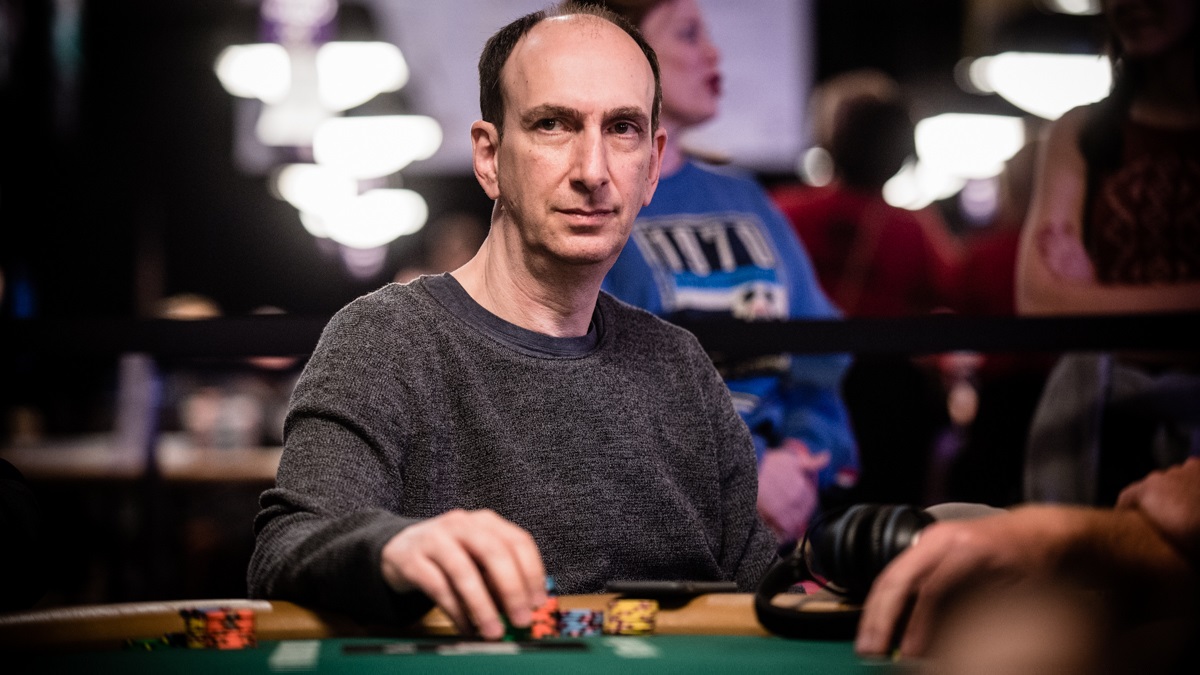
The High Roller Stars
So, where is all the money flowing?
Here is the Top 10 list for most cash won in $25k+ buy-in events during the past decade.
Top 10 Cash Won (Including One Drop)1. Daniel Colman - $23,369,660 |
|---|
| 2. Antonio Esfandiari - $20,753,198 |
| 3. Fedor Holz - $18,841,877 |
| 4. Scott Seiver - $18,243,613 |
| 5. Erik Seidel - $17,706,083 |
| 6. Brian Rast - $17,178,853 |
| 7. Sam Trickett - $16,642,987 |
| 8. Daniel Negreanu - $14,251,197 |
| 9. Elton Tsang - $12,411,124 |
| 10. Tom Marchese - $10,830,379 |
If you remove the One Drop results, players like Daniel Colman, Antonio Esfandiari, Sam Trickett, Daniel Negreanu, and Elton Tsang fall out of the picture.
Top 10 Cash Won (Minus One Drop)1. Fedor Holz - $18,841,877 |
|---|
| 2. Erik Seidel - $17,706,083 |
| 3. Scott Seiver - $16,563,613 |
| 4. Brian Rast - $15,557,520 |
| 5. Tom Marchese - $10,830,379 |
| 6. Isaac Haxton - $10,521,630 |
| 7. Steve O'Dwyer - $10,063,192 |
| 8. Phil Ivey - $9,426,628 |
| 9. David Peters - $8,798,599 |
| 10. Bryn Kenney - $8,372,894 |
The one person who survived my decision to remove One Drop results is Scott Seiver proving his consistency in the past decade.
The remarkable thing about the Top 10 (Minus One Drop) is the rise in prominence of Fedor Holz. If one young man epitomises the dream of every professional poker player, it is the 23-year-old German.
Before 2015, Holz's highest annual haul was $202,143, and two years later he spends that much in the afternoon at The Aria. Holz also hit the Top 10 ITM Cashes, but he didn't make either the Final Table Top 10 or the Top 3 ITM Finishes Table, showing how efficient he has been at winning the BIGGEST available prizes in the game. The boy Holz knows how to pick a win.
Another person worthy of mention in the Top 10 Cash Won (Minus One Drop) list is Phil Ivey. The man people still believe is the Muhammad Ali of poker doesn't play in The Aria High Rollers, and you won't see him on the PokerStars Championship circuit.
Ivey makes the grade because of his early domination of the AUD$100,000 & AUD$250,000 Challenges in the Aussie Millions. Sam Trickett is another player who has done exceptionally well in Australia but doesn't feature in The Aria nor the PokerStars Championship that frequently.
The one man who does exceptionally well on all three accounts (Aussie Millions, Aria & PokerStars Championship) is the evergreen Erik Seidel. If there is one man, who has stood the test of time and competing against the very best past and present it is the New Yorker sitting on top of the Top 10 ITM Cashes and the Top 10 Final Table Appearance Table.
Titles are great, but the aim for the professional must be to squeeze into those main three spots, and nobody does that more consistently than Tom Marchese with 19 Top 3 ITM finishes (mainly Aria). It's also worth noting that Cary Katz (a non-professional), features in all of the cashes tables (except total cash won), once again as a result of his consistent performances at The Aria.
But money won is often misleading so I asked the pros to pick out some of the most exceptional talents and this is what they had to say:
"There are so many it's impossible to list without leaving people out," said Seidel. "I'll just say I think Steve O'Dwyer's results are incredibly impressive and as much as the pros see this, I still believe he's not recognised for it nearly as much as I think he should be."
Talal Shakerchi gave special praise to Scott Seiver and David Peters, and amongst the non-professionals, Bill Klein got a special mention. Klein has made nine final tables, making the top three spots on five occasions, but he has failed to win a single event, being defeated in heads-up the four times he has made it that far.
Top 10 ITM Cashes1. Erik Seidel - 32 |
|---|
| 2. Tom Marchese - 30 |
| 3. Scott Seiver - 29 |
| 4. Cary Katz - 27 |
| 5. Isaac Haxton - 22 |
| 6. Brian Rast - 21 |
| 6. David Peters - 21 |
| 7. Fedor Holz - 20 |
| 7. Steve O'Dwyer - 20 |
| 7. Bryn Kenney - 20 |
| 7. Jake Schindler - 20 |
| 8. Igor Kurganov - 19 |
| 8. Byron Kaverman - 19 |
| 9. Daniel Negreanu - 16 |
| 9. Dan Shak - 16 |
| 10. Jason Mercier - 15 |
| 10. Jason Koon - 15 |
Top 10 Final Table Appearances
| 1. Erik Seidel - 32 |
|---|
| 2. Scott Seiver - 29 |
| 3. Tom Marchese - 30 |
| 4. Cary Katz - 27 |
| 5. David Peters - 20 |
| 6. Brian Rast - 19 |
| 7. Isaac Haxton - 18 |
| 7. Jake Schindler - 18 |
| 8. Fedor Holz - 17 |
| 8. Steve O'Dwyer - 17 |
| 9. Bryn Kenney - 16 |
| 10. Byron Kaverman - 15 |
Top 5 Top 3 ITM Finishes
| 1. Tom Marchese - 19 |
|---|
| 2. Erik Seidel - 18 |
| 3. Cary Katz - 15 |
| 4. Brian Rast - 12 |
| 4. Jake Schindler - 12 |
| 5. Scott Seiver - 10 |
| 5. Isaac Haxton - 10 |
| 5. Jason Mercier - 10 |
Top Non-Professional ITM Cash Won (Not Including One Drop)
| 1. Stanley Choi - $6,986,352 |
|---|
| 2. Dan Shak - $5,503,940 |
| 3. Cary Katz - $5,385,787 |
| 4. Richard Yong - $4,468,293 |
| 5. Paul Phua - $4,458,243 |
The High Roller Geography
Just to prove that America, China, and Germany don't hold the monopoly on High Stakes Poker action here is a list of the 56 countries that house players who have cashed in High Roller events in the past decade.
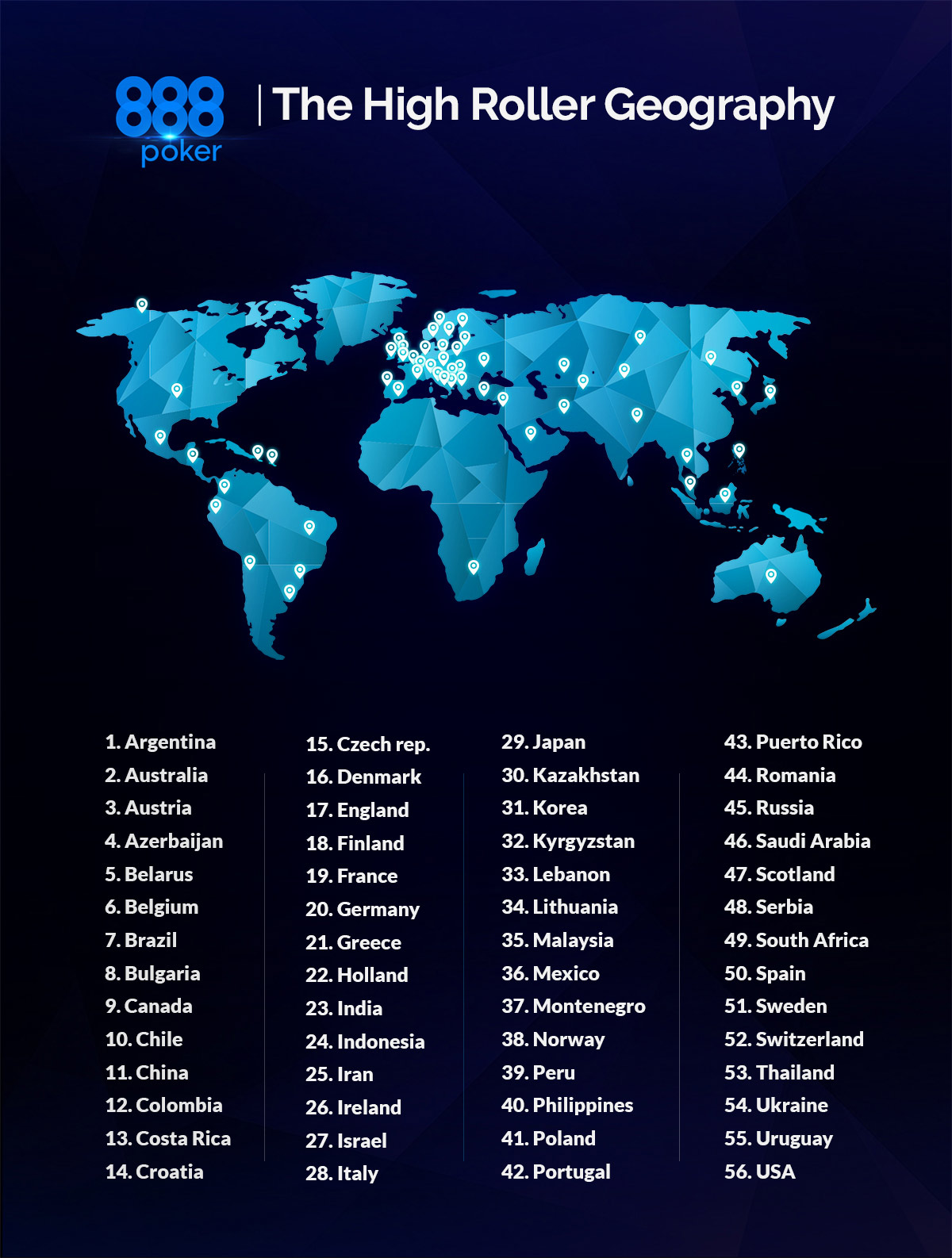
Big Games: The Future of High Stakes Poker?
At the beginning of this article I posed the question:
How can this continue?
Well, it seems that the money is not leaving the industry anytime soon. In the case of The Aria, even non-professionals such as Cary Katz are still ploughing their winnings back into the game. There are no hit and runs, and with the likes of Dominik Nitsche, Adrian Mateos, Sergio Aido, and Jack Salter dipping their fingers into the scene the future looks promising.
With the most ITM Cashes and Final Table appearances, Erik Seidel, knows this scene inside and out, and his experience gives him hope that the High Roller economy is a stable one.
“I think Cary Katz & Aria have done a great job creating regular high roller events & conditions that the pros & amateurs both like,” Said Seidel. “Reasonable rake, great food & a nice atmosphere. They are also doing other good things, so I think the future is bright.”
With over $7.5m in winnings taken from these games, Rainer Kempe, ranks as the 19th most successful in terms of cash won, so his opinion on the future of these games is one worth listening to.
"The percentage of people winning money in High Roller tournaments is higher than in other events since the rake is significantly lower," said Kempe. "Most people who do not make money in them will keep playing as long as they enjoy the competition. I can't think of a businessman or woman in those fields where I would be worried that he or she couldn't afford the buy-ins at some point."
Talal Shakerchi is one of the non-professionals who competes in the highest buy-in games as often as his business and philanthropic calendar allows him. The Hedge Fund manager agrees with Kempe that the low rake is a major factor.
“The High Roller events work at the moment because percentage rake is relatively low and a few recreational players usually enter," said Shakerchi. "Also High Rollers are often held during a series when players are there for other reasons, so there are no additional travel costs, etc."
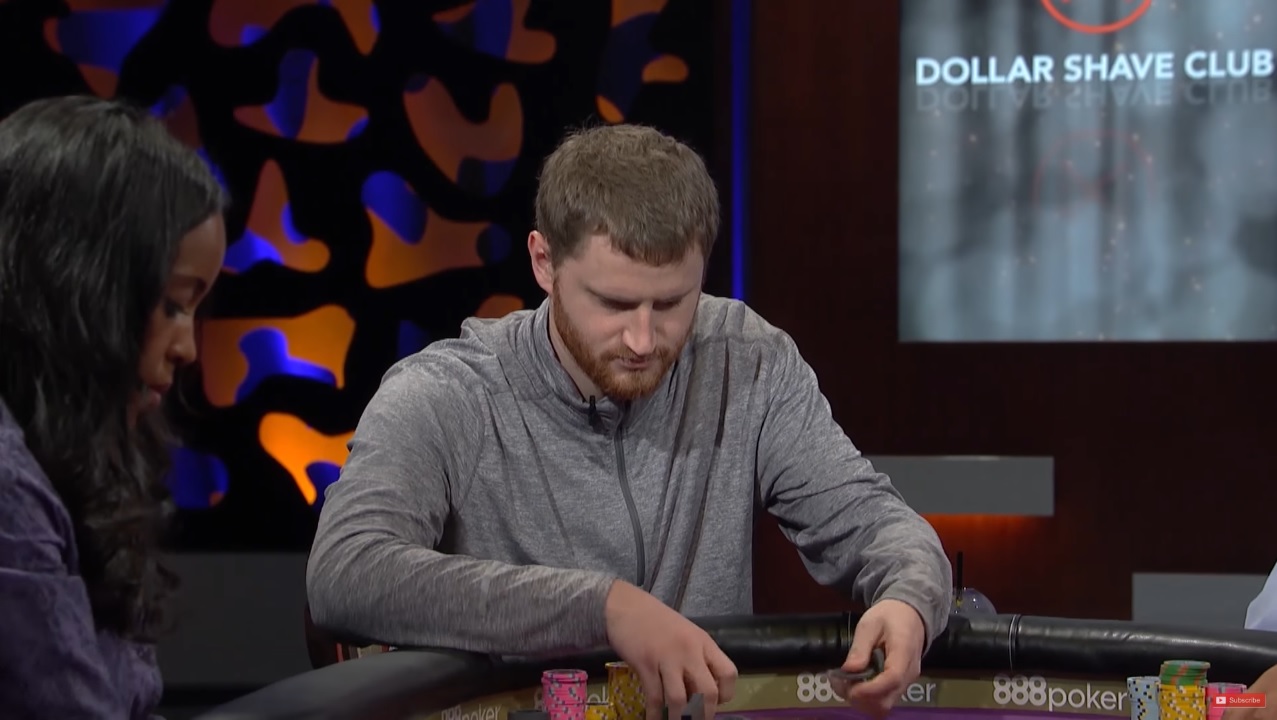
David Peters is the current Global Poker Index (GPI) Player of the Year and ranks 15th in the Total Cash Won table with $8.8m in live tournament earnings, and he doesn't expect the games to dry up.
"I think the High Roller economy is doing well and don't expect it to drop off anytime soon," said Peters. "There's plenty of people out there who are looking to invest in players to play if they can't afford to put up the whole buy-in themselves, and there are a lot of recreational players who enjoy the challenge of playing against great players and also love the game. Also, we all play with each other so much that there's a lot of good and friendly energy with people having fun."
I think Peters makes a great point widely overlooked by anyone outside of this niche. Poker at its core is a form of entertainment, and when you have a small group of people who compete regularly, bonds will form, and there will be more fun at the tables.
So the feeling of our short and sharp panel is unanimous - the games will continue. But how beatable are the games? Pick up any basic poker book, and there will be advice to avoid the best players at all costs, and yet here they are, competing willingly.
“They are very challenging but beatable," said Seidel. "Cary {Katz} is not a pro and has had great results in them, and I don't think it's a fluke. They are a great place to fine tune your game & see where you stand."
"Once again it comes down to reduced rake and high buy-ins. So even small edges pay off if you can afford the variance," said Kempe. "How big or small that edge is is clearly very tough to say. And I'm sure most players or player groups are somewhat biased in their judgement."
“There's usually a good mix of pros and recreational players. But yeah, the big prize pools and testing yourself against some of the best players on some of the biggest stages is always really enticing,” said Peters.
Peters talks about the good mix of pros and recreational players, and I think back to Haxton's comments on the Poker Central podcast and the importance of the recreational player's involvement. One of those recreational players is Talal Shakerchi, and I ask him how it feels to be walking into these games with a target on his back?
"I don't feel that way at all," said Shakerchi. "I have played enough of them and usually know 90% of the participants so don't feel like an outsider. As for the target, I have won a few HRs and cashed in several so don't feel that way. Even in the case of unknown recreational players, the pros who play HRs are smart enough to make them feel welcome and valid participants."
So Shakerchi feels at home, but this isn’t the case throughout the recreational player pool, demonstrated by Guy Laliberte’s decision to host the 2016 $1m buy-in One Drop in Monte Carlo and restrict it to non-professionals. I ask the panel what their views are on this move by the Cirque de Soleil founder.
“The problem with the restricted tourneys is they don't really know who the pros are," said Seidel. "Elton {Tsang} who won this last one is a phenomenal player; I would take him vs. any field, he's an elite player. He got in because they don't know him, and so did many others, so I don't think it works well."
"I don't like that idea at all," said Peters. "These events should be about having a good mixture between amateurs and pros. Poker is a game that anyone can play and I don't think any tournament should ever be restricted. If there's a cap for whatever reason than that's fine, then some people might miss out, but other than that if you come up with the buy-in, anyone should be allowed to play."
“I am fine with that in principle but there are two challenges,” said Shakerchi. “(1) There are very few real amateurs who will play HRs so numbers would always be thin; and (2) It is not easy to draw a satisfactory clear line on what factors allow players to qualify. Strictly pro just means that poker is the person’s main occupation/income source. That leaves a lot of grey areas which are difficult to resolve cleanly.”
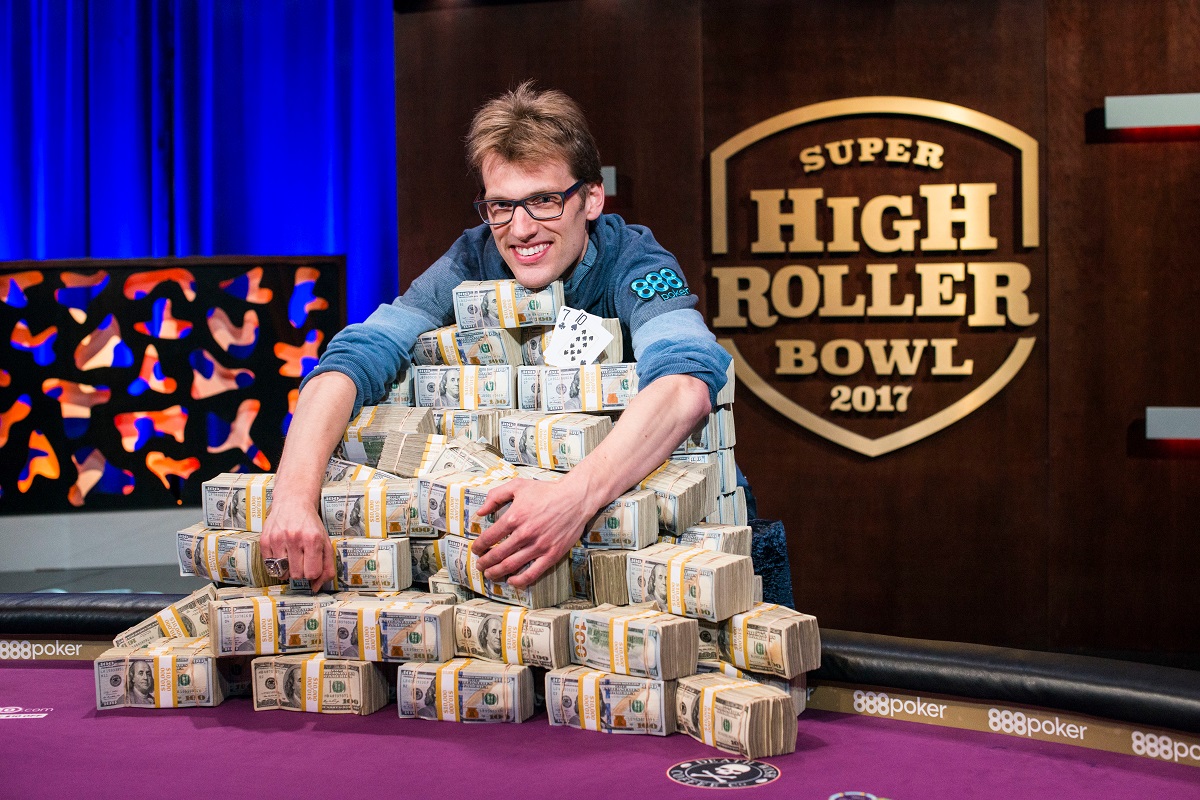
The Top High Stakes Tournaments
There have been 238 tournaments with a $25k+ buy-in in the past decade, but which event is the best? Which event drums up the most excitement amongst the pros and amateurs, and why?
"The $300k at Aria is now the most important tournament of the year, no question," said Seidel. "You can't even fantasise about winning the WSOP Main Event anymore; I would bet any specific player doesn't make the final nine in their lifetime."
Rainer Kempe agrees with the great man, although you can’t blame him - he won the thing for $5m last year.
“It has to be the Super High Roller Bowl, right? The structure, coverage, rake, dealers, field - all of it was really good last year. And I am very much looking forward to that one again.”
David Peters and Talal Shakerchi also agree that the premier event of the year is the $300,000 buy-in Super High Roller Bowl.
“I think the Aria $300k is the best tournament of the year and the one I'm most looking forward to,” said Peters. “I love playing at Aria, very comfortable, they do a great job of running it, no rake, friendly environment, and huge prize pool. Can't wait for it.”
"The SHR Bowl last year was good," said Shakerchi. "Zero rake, $300k (2%) added to the prize pool; players well looked after, good range of players."
High Roller Summary
The High Roller community is an important part of the poker ecosystem. It is the one place where the very best in the world regularly compete making it avid entertainment for consumers of the game, and digital media entities like Poker Central could make something special out of this.
While the money doesn't necessarily float down to the lower strata of the poker ecosystem, it doesn't leave it either. The pros and amateurs who compete in the games seem to enjoy it, and they don't appear to be leaving the game anytime soon.
The players don't have 100% of their action, but there is transparency about the movement of money, and that shows respect for the players in the game.
The only concern is how new pros get involved in the action now it's harder to run up a bankroll playing online because of the hurdles that some countries, mainly America, put in front of the professional poker player.
The panel was unanimous in support of the High Rollers, and all felt they were good for the industry, and as someone who fell in love with poker watching High Stakes Poker and Late Night Poker on TV, I am inclined to agree.
